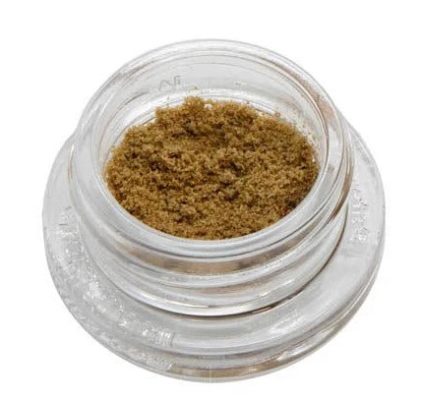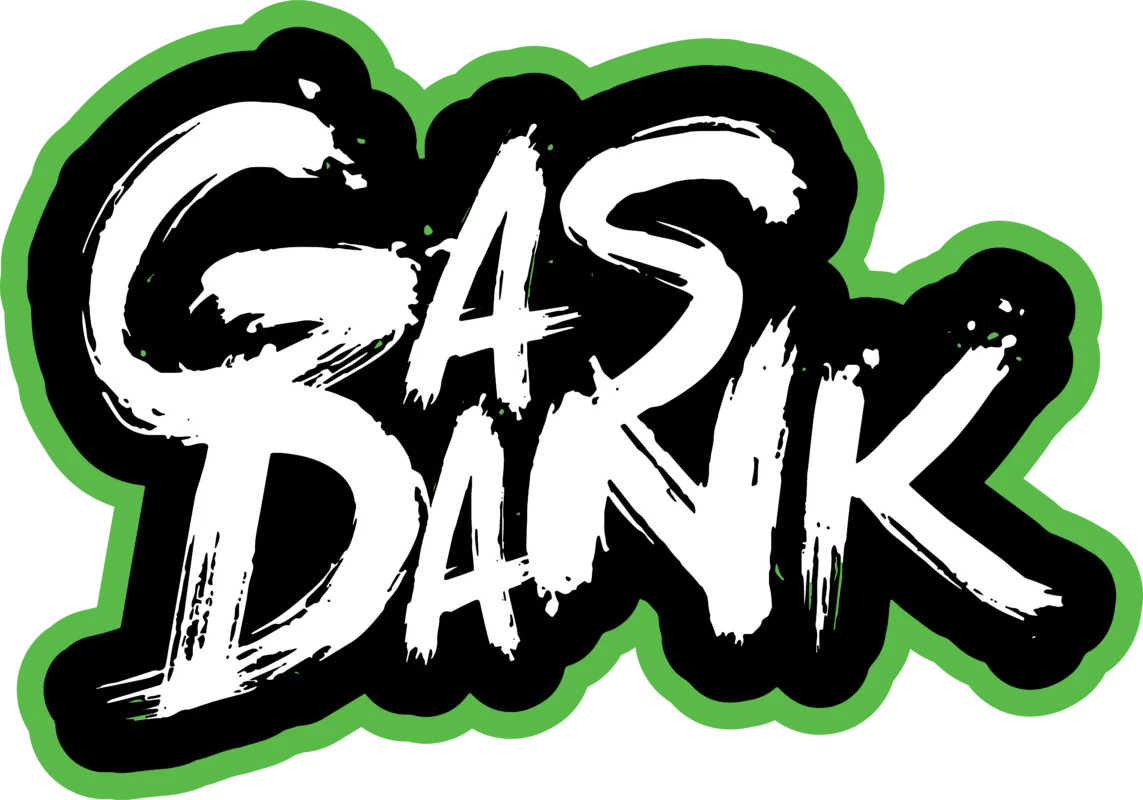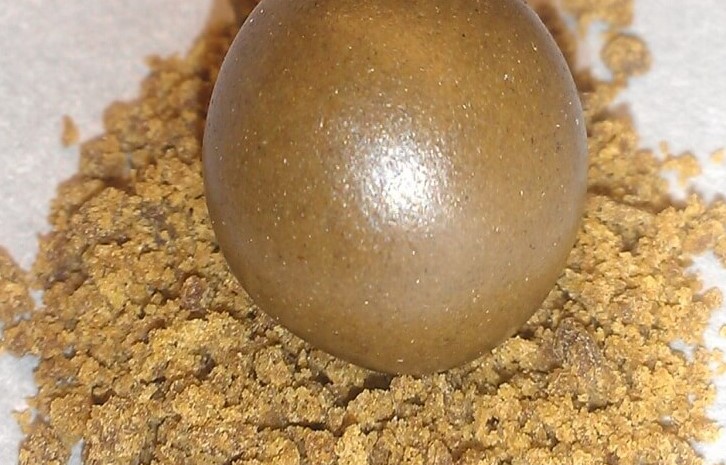Uncategorized
Bubble Hash
Bubble hash was one of the purest types of cannabis before modern-day extraction methods fueled the rise of concentrates. Although the idea of bubble hash has been around since the early 1980s, it has only recently risen in popularity. Continue reading to learn about its history, differentiating features from other concentrates, how to utilize it and how to create it.
What is Bubble Hash?
Bubble hash is a solventless concentrate produced via ice water. Bubble hash is made up of millions of trichome glands that resemble granular brown sugar when crushed, and it looks like traditional hash when pressed together. Despite the fact that it isn’t known to be the most potent concentrate, it’s jam-packed with terpenes.
During the water agitation process, trichome glands that cover the cannabis plant are shaken off. These glands are passed through micron screens to assure a high-quality trichome product. This strain has an average THC content of 30-60%.
Types of Bubble Hash
Bubble hash is available in many different varieties. Users will encounter a variety of bubble hash qualities while browsing through a dispensary. The starting ingredients’ grade and the final screen size that the trichomes were able to transit are used to categorize them.
Trim Processed
 Trim bubble hash is generally of the lowest quality. Although high-quality trim may produce excellent bubble hash, it is uncommon to find. These types of bubble hash are generally black in color and take longer to burn.
Trim bubble hash is generally of the lowest quality. Although high-quality trim may produce excellent bubble hash, it is uncommon to find. These types of bubble hash are generally black in color and take longer to burn.
Bud Processed
The highest grade of bubble hash is usually created from complete buds. Using high-quality material does not guarantee that top-shelf bubble hash will be produced, but the chances are greater when starting with higher-end material.
Micron Screen Sizes
The quality of bubble hash is primarily determined by the size of the screen. The more contaminants that are allowed to mix with the bubble hash, the bigger the screen size must be. Pure resin glands will form when bubble hash is filtered through the tiniest screens.
When bubble hash is broken down into finer particles, the overall hue shifts to a darker hue because of the remaining compounds in addition to the resin glands. The lighter hues in bubble hash are due entirely to trichome heads being able to pass through.
How Bubble Hash Differs From Other Concentrates?
Solventless extract is another name for bubble hash. It’s a solventless extract because it contains no chemicals.
The majority of concentrates are obtained using a variety of solvents. Butane, CO2, alchohol, ethanol, and propane are some of the most common solvents utilized. Shatter, isolate, budder, live resin, crumble and CO2 oil are all examples of concentrates that are frequently extracted with solvents.
Rosin, for example, is a solventless extract that’s made from hash. Rosin is produced through pressure and heat. Rubbing hands on the cannabis buds to create hash has been a popular method since ancient times.
Bubble Hash – a type of full melt bubble hash, also known as full melt ice water hash.
Bubble Hash Potency
Bubble hash is a very light concentrate. It has a THC concentration of 30-60 percent, which is lower than many other concentrates. Although this quantity isn’t terrible, it pales in comparison to other solvent-based concentrates.
The majority of solvent-based extracts have a THC concentration of 60-80%. THC isolate is one example, which may attain a mind-blowing 99% THC level.
In terms of THC, bubble hash is one of the weakest concentrates, although it does have a high amount of terpenes. Terpenes are now believed to have a bigger role than previously assumed by researchers.
Terpenes have been linked to brain function, memory, and the immune system. They have also been shown to interact with the body in order to alter how cannabinoids affect individuals. This means that THC content works in tandem with terpenes to induce a euphoric feeling. There could be even more need for bubble hash as terpenes are better understood.
Bubble Hash Effects
 Bubble hash has a distinct impact. Users who smoke bubble hash claim a strong onset that leaves them feeling extremely euphoric, owing to the high terpene content of the product. Chlorophyll, lipids, and other cannabinoids generate “noise” in the effects of cannabis; without these, bubble hash’s surreal and clear high is impossible.
Bubble hash has a distinct impact. Users who smoke bubble hash claim a strong onset that leaves them feeling extremely euphoric, owing to the high terpene content of the product. Chlorophyll, lipids, and other cannabinoids generate “noise” in the effects of cannabis; without these, bubble hash’s surreal and clear high is impossible.
Users of bubble hash will not experience any “hangover” effects as a result of its absence of solvents. One theory is that because bubble hash is solventless, the lack of solvents eliminates the possibility for “hangovers”; another reason could be that it’s entirely THC.
Bubble Hash History
The process for making bubble hash is thought to date back to the 1980s. Neville Schoenmakers, the famous owner of the world’s first cannabis seed bank, developed the bubble hash technique, according to historical sources.
It was Santa Cruz, CA’s “Sadhu Sam” who introduced the technique of obtaining bubble hash from ice-water. From hereon, bubble hash went viral across the globe since to its distinctive qualities. The name comes from the fact that tiny bubbles appear when smoke is drawn through it.
Bubble hash is a dark green to blackish brown form of hashish. The color and texture of bubble hash resemble ice water Hash, but it has more CBD.
Because of the way it’s smoked, tiny bubbles form while it is being consumed.
How Bubble Hash is Made
The methods for producing bubble hash have changed over time. The original “recipe” from Sadhu Sam, which called for a few grams of cannabis, a bucket, a tiny paddle, and a mesh filter in cold water, was initially published. It was through the use of these readily available instruments that he popularized his new type of marijuana.
In January 2004, small cannabis niche shops from Canada to Amsterdam began selling bubble bags. These bags come in a variety of sizes and are placed inside 3-5 gallon ice water. The bags enable trichome heads to fall through the holes and settle to the bottom of the container.
This approach involves placing the bubble bag over the entire plant, allowing all of the plant material to remain inside. After this initial phase is complete and the plant matter has been sufficiently agitated to ensure that no trichome heads remain, it is thrown away.
Refinement
The following phases are based on improving the trichome heads and material that was able to pass through the bubble bag mesh filter.
To filter out everything that isn’t trichomes, you’ll need a series of progressively smaller micron mesh bags. The first bubble bag will be about 200-300 microns thick at start and will decrease to roughly 20-25 microns in the final step.
The process of removing big particles from the soil is known as mechanization. It’s more difficult to remove larger particles. Fine sand will flow through a 250-micron filter, but pollen grains would pass through a 37-micron one. The safest passage for trichomes to go through is 20-25 microns in diameter. A 12-micron filter can be used to filter blood cells, for comparison (
After the last pass, the bucket should only contain golden/white trichome heads, which are full of THC. The final mesh screen has a finer micron mesh below that traps all of the trichome heads for easier removal.
Drying and Storing
 The trichomes must then be dried. They can be laid out to dry after being removed from the bag in which they were kept moist, or they may be sieved and placed on a tiny screen. After being spread on the screen, they can be allowed to dry.
The trichomes must then be dried. They can be laid out to dry after being removed from the bag in which they were kept moist, or they may be sieved and placed on a tiny screen. After being spread on the screen, they can be allowed to dry.
Typically, the micron screen should be left in the dark for roughly 7 days, giving plenty of time for the resin to fully dry. Once solid to the touch, bubble hash is ready. The bubble hash can be stored in glass jars after it has been dried. It’s crucial to remember that bubble hash should never be exposed to direct sunlight.
The bubble hash becomes less sticky as it dries, and it can be kept in glass jars for as long as the substance lasts.
The Relationship Between Water and Trichomes
Cannabis resin glands are thicker than water molecules. The volatile chemicals present on trichomes, such as terpenes, are captured by the chilly temperature of the water. It’s for this reason that ice-cold water is essential in bubble hash production.
New Methods of Making Bubble Hash
Bubble bags in buckets are becoming a thing of the past, albeit slowly. Even air drying is becoming obsolete among major producers of bubble hash. Bubble machines are being used to extract bubble hash now. Freeze dryers that employ cutting-edge technology are taking the place of air drying.
Bubble Hash Machines
Bubble hash machines are compact washing systems that automate the agitation process. When bubble bags are used, users must agitate the water for lengthy periods. Nowadays, bubble machines have been developed to automatically perform this task while leaving the user to change the bags after each wash. This machine helps you save time on your production line.
Freeze Drying Bubble Hash
Because of the length of time required to wait, air drying techniques are no longer used by professional producers. Freeze drying machines costing thousands of dollars are capable of drying big quantities of bubble hash in a few hours.
Freeze drying is a method of producing pharmaceutical-grade bubble hash by freezing, removing the moisture from, and reducing plant material to tiny particles. These pharmaceutical-grade freeze dryers are completely automated and only need the user to fill the trays with bubble hash.
The most significant advantage of utilizing a freeze dryer is that it maintains a high level of terpene content while also reducing THC degradation. Terpenes have an important part in cannabis, including the aroma and flavor as well as how users feel during their experience.
In a competitive market, most bubble hash producers apply this technology to improve their product.
How to Consume Bubble Hash
Bubble hash can be consumed in a variety of ways, including smoking and ingesting it. Users may not be able to consume bubble hash in every manner because it is versatile.
Vaping
 Vaping is a form of consuming cannabis that has become increasingly popular in recent years. Plant material or oils are heated in a convection or conduction chamber with these handheld gadgets. Users have more control over the goods that they vape since many vaporizers allow them to adjust the temperature.
Vaping is a form of consuming cannabis that has become increasingly popular in recent years. Plant material or oils are heated in a convection or conduction chamber with these handheld gadgets. Users have more control over the goods that they vape since many vaporizers allow them to adjust the temperature.
Bubble hash is readily vaporizable. Users may reach a low temperature to get the best taste from bubble hash since vaporizers allow for precise temperatures. A screen may be required within the vaporizer chamber to catch resin left over depending on the quality of bubble hash.
Dabbing
Dabbing is a type of vaporizing concentrate that uses an “oil rig,” which resembles a small bong. Users manually heat a metallic nail on oil rigs, which differ from one another in terms of the positioning of the heated metal nail.
When the bubble hash is hot, users may apply a small metallic pick to a portion of it on their nails. As the user breathes in, the bubble hash is instantly vaporized. It’s usually preferable to flatten the bubble hash so that it has a larger surface area and evaporates more quickly.
The increasing popularity of solventless extracts is attributable to an increase in concentrate connoisseurs. The extraction process preserves the terpene profile, and dabbing results in a wonderful burst of full flavors with an immediate rush.
Smoking
Bubble hash has the benefit of not requiring special equipment to smoke. Bubble hash may be smoked from bongs and joints, much like cannabis flowers.
Pipe
A pipe, like a joint or a bong, may be used to smoke bubble hash. Take a tiny piece from the bubble hash ball and insert it into a pipe, either with or without marijuana buds.
Bong
Similar to how people smoke bongs, bubble hash may be put into a bong’s bowl and smoked. The bubble hash can be utilized alone or combined with cannabis buds.
Joint/Blunt
Bubble hash may be smoked in a joint or blunt. Bubble hash is extremely malleable, and it can be stretched by compressing and rolling it. It can then be used to wrap cannabis buds or tobacco.
Edibles
A transport oil is all that’s required to make edibles infused with bubble hash. This oil can be made from olive, coconut, hemp seed, flax seed, almond, or canola oil.
Many consumers are beginning to shift away from butter due to health concerns, but it may also be used to produce cannabutter. With so many nutritious oils available, butter is increasingly being excluded from meals.
When the dish is started, the bubble hash will be activated. The heating process will actively decarboxylate the THC in any cooking, making it psychoactive, whether you’re preparing a stew or a brownie.
When eating bubble hash edibles, caution should be exercised since the potency of these products is hard to determine.
The heating process will actively decarboxylate the THC in either a stew or a brownie, as it does when cooking marijuana.
Bubble Hash Prices
Bubble hash costs vary. Bubble hash is more expensive than other types of cannabis, especially high-THC strains and well-known producers. On the opposite side, bubble hash can be produced from low-quality ingredients for little money.
Top-Shelf
Bubble hash is expensive (for top-shelf, at least). The solventless extract is sold in most dispensaries for $50-100 per gram. Top-shelf bubble hash uses the highest grade cannabis starting material and applies the finest screen to the trichome heads. If the strain is particularly famous or if there are simply a few bubble hashes available, this price can quickly rise.
Mid-Shelf
The cost of excellent bubble hash is generally between $20 and $40 per gram, depending on quality. This type of bubble hash was screened through medium-fine screens and contains mid-range cannabis material.
Budget
The price range for budget bubble hash is $5 to $15 per gram. These are low-quality because they were filtered using bigger screen sizes and lower-quality plant material.
Bubble Hash Health Benefits
 Although they have been around for much longer, bubble hash and other so-called “bubble oils” are still relatively new. One of the driving forces behind their growing popularity is that many users want to get rid of their nicotine addiction without having to commit to a complete e-liquid change.
Although they have been around for much longer, bubble hash and other so-called “bubble oils” are still relatively new. One of the driving forces behind their growing popularity is that many users want to get rid of their nicotine addiction without having to commit to a complete e-liquid change.
The most common solvents to remove THC from cannabis buds are butane, propane, and other hazardous chemicals. Even if test results show that the concentrate has been fully eliminated, it’s still not known how long these materials remain in the body.
Bubble hash, on the other hand, is a solventless extract. To make this one-of-a-kind product, you’ll need ice, water, and gravity. Only resin glands are being destroyed during the process. Many health-conscious cannabis advocates have pushed for wider use of bubble hash and other solventless extracts as a result of this discovery.
The Solvent-Based Dilemma
The popularity of solvent-based extracts has a major influence on the environment. Chemicals are being dumped in massive quantities by producers who are not regulated, and these solvents infiltrate waterways and the soil eventually.
The transportation of cannabis across the United States has a significant environmental impact, and it will soon be tightly controlled as recreational marijuana becomes more popular. Bubble Hash does not require solvents, so it is not polluting the environment like solvent-based extracts are.
Bubble hash was one of the purest types of cannabis before modern extraction technologies fueled the popularity of concentrates.
Bubble Hash: The Cleanest Cannabis Concentrate
The cannabis industry may take a closer look at itself to discover methods for making cleaner extracts as bubble hash continues to be the solventless concentrate trendsetter. The notion that concentrates might be manufactured without chemicals is groundbreaking in and of itself, and it’s piquing the interest of many consumers.
Overall, bubble hash has shown the cannabis community that outdated techniques with a contemporary twist are still effective. Neville and Sadhu Sam’s technique is still effective today, as is the torch for bubble hash.



